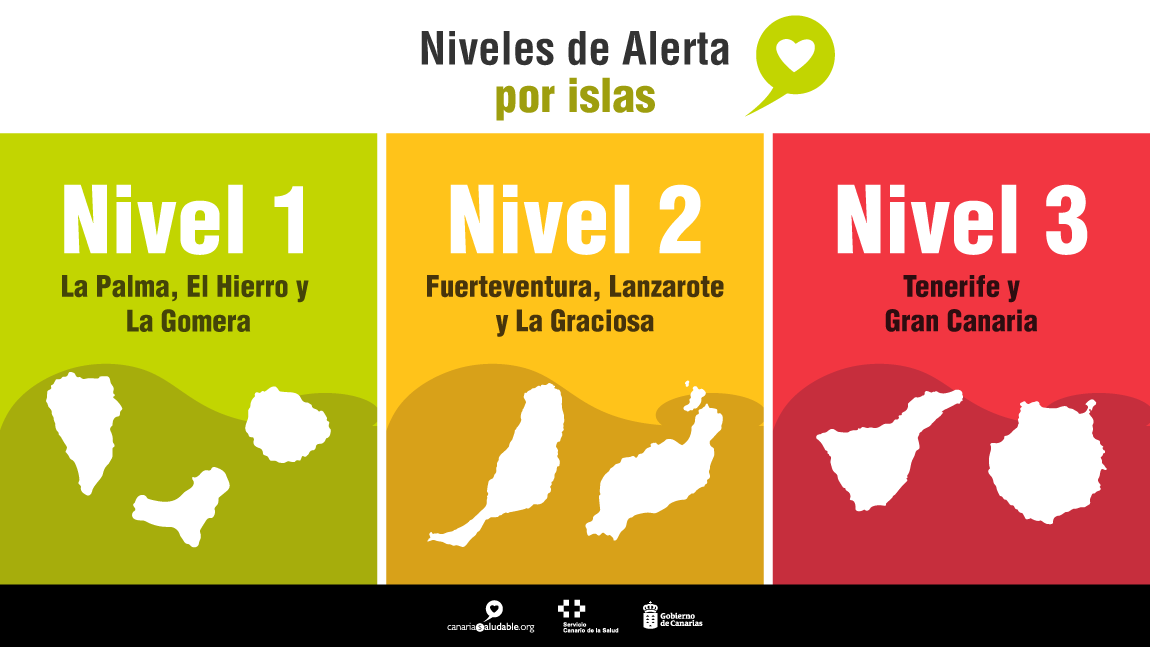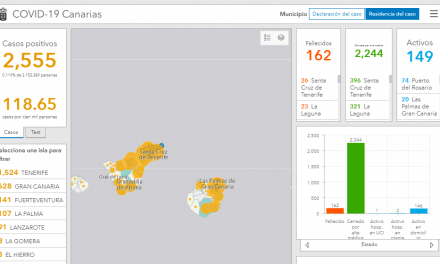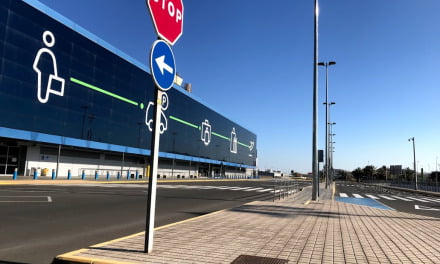The Canary Islands Governing Council, who met on Thursday, as the region approaches their half-millionth vaccine dose administered, agreed to maintain current alert levels for COVID-19 on all islands, except Fuerteventura, which, given their epidemiological indicators continuing to improve, drops from Alert Level 3 to Alert Level 2.
So, until April 22 at least, Tenerife and Gran Canaria continue at level 3 (red traffic light), Fuerteventura, Lanzarote and La Graciosa at level 2 (orange traffic light), and La Palma, La Gomera and El Hierro at level 1 (green traffic light).
For the latest Canary Islands data on Covid-19, updated daily, check our Canary Islands dashboard
 “On Gran Canaria and Tenerife there are still worrying data, there is a line that we cannot reduce,” said the Government spokesman, Julio Pérez, announcing this week’s general review of measures in force for each level based on experience and technical criteria.
“On Gran Canaria and Tenerife there are still worrying data, there is a line that we cannot reduce,” said the Government spokesman, Julio Pérez, announcing this week’s general review of measures in force for each level based on experience and technical criteria.
Analysis of the eight epidemiological indicators used, to determine each level of alert shows that in the two capital islands, Tenerife & Gran Canaria, despite their indicators worsening slightly, are not currently in sufficient conditions to decree a level 4 alert, which is the most restrictive, despite some on the islands having requested it this week.
The two capital islands continue on the red traffic light for a second month, with perimeter controls, curfews at 10 pm and meetings of no more than four people. However, so far they have not been able to reduce the contagion levels or reduce their seven-day or fourteen-day accumulated incidence, which, in fact, have risen. The Ministry for Health pointed out that this may be due to several factors, including the Easter holidays and pandemic fatigue, which can easily lead a population to neglect compliance with health standards, among other factors.
Pérez has acknowledged that the Government of the Canary Islands is wondering what other measures could be more effecting in reducing the trend of infections, but has stressed that these same restrictions have worked at other times and now they have again been shown to do so in Fuerteventura, which has allowed that island to decrease their alert level.
 However, the Minister of Public Administrations has indicated that the effects of the vaccines roll out “seem to begin to be visibly noticeable” given that contagions have been reduced between the target groups who have already vaccinated with both doses, which are groups 1 and 2.
However, the Minister of Public Administrations has indicated that the effects of the vaccines roll out “seem to begin to be visibly noticeable” given that contagions have been reduced between the target groups who have already vaccinated with both doses, which are groups 1 and 2.
“It is a relevant fact and without wanting to think that everything is resolved, it is a sign that the vaccine has positive effects,” said Pérez, who has trusted that the same effect will occur in the vaccination groups who follow.
The rate of vaccinations has resumed, following the recent problems in delays caused with AstraZeneca, and will be offset by the arrival of more Pfizer vaccines, expected over coming weeks, although he did not know specifically in what quantities.
Pérez confirm that within the Canary Islands archipelago there have been days when between 16,000 and 17,000 people have been vaccinated, although the Canary Health Service estimates that, if there are enough vaccines available, that amount can be doubled.
He has also indicated that, as the islands approach their half-millionth vaccine dose administered, the figures for the use of doses in the Canary Islands are within an acceptable range, and has warned that the supply of vaccines throughout the Spanish territory is based on the number of vulnerable people in each regional community.
?Actualización de los niveles de alerta en cada isla:
?Nivel de alerta 1: El Hierro, La Gomera y La Palma.
?Nivel de alerta 2: Fuerteventura, Lanzarote y La Graciosa.
?Nivel de alerta 3: Gran Canaria y Tenerife.➡Más info: https://t.co/qRb3NiQlmg pic.twitter.com/SXRviOR9MT
— Sanidad Gobcan (@SanidadGobCan) April 15, 2021
Approaching the half-millionth vaccine dose on the islands
The Regional Health Ministry, announced on Friday that they have now administered in excess of 457,276 doses, using the three available vaccines against COVID-19 approved by the European Medicines Agency, our of the 512,410 received, which represents 89.24%. Of the total doses administered, 315,169 were from Pfizer, 24,756 from Moderna and 117,351 from AstraZeneca. On, Thursday, April 15, the vaccination teams in the Canary Islands managed to administer 18,418 doses, representing a new dose record for a single day. Of these, 12,120 were from Pfizer, 636 from Moderna, and 5,662 were from AstraZeneca. That meant that a total of 121,919 people had already received both doses of the vaccine, representing 6.52 percent of the total target population (1,871,033 people).
Development of the vaccination schedule
The vaccination schedule is moving forward well, with each of the target population groups at which it is directed, and based on vaccines available, destined for each age group according to the National Vaccination Strategy against COVID-19. Vaccination teams in each basic health zone are moving on to each population group, as the previous one ends, prioritising continuing with the maximum coverage for each age group, without the vaccination process having been paralysed on any of the islands. The Ministry of Health reports that they have already begun to vaccinate people between the ages of 70 and 79 years old, who make up Group 5B, in the Canary Islands health centres. This group is being inoculated, indistinctly, with the Pfizer and Moderna vaccines.
Group coverage progress so far:
Following immunisation, with both doses, for groups 1 and 2 (ie residents and workers in social health centres and first-line health professionals), vaccination then continues with each of the groups established following criteria of vulnerability and exposure. 89.33% of Group 4, that of large household dependents, according to the latest data are now fully immunised, with the two doses. For the seniors group 5 (a- 80 year olds and older, b- 70-9 year olds and c- 60-69 year olds), 28,293 people have already received both doses, that is, 9.93% of the group. While 152,632 have received at least one dose, that is 53.56%. In Group 3, all healthcare and social health personnel, 100% have already received their first dose and 25.81% both doses; and for group 6, 28.52% have already had their first dose. Of group 7, those under the age of 60 with high risk conditions, 3,072 people have had their first dose, which equates to 17.32% of that target population.
POPULATION GROUPS TO BE VACCINATED
Group 1. Residents and health and social health personnel who work in homes for the elderly and care for large dependents.
Group 2. Front-line personnel in the health and social-health field.
Group 3. Other health and social health personnel:
º Group 3A. Hospital and PC personnel not considered in group 2. Dental, dental hygiene and other personnel.
º Group 3B. Public Health services personnel-management and response to the pandemic. Health and social health personnel not previously vaccinated. Physiotherapists, occupational therapists, pharmacy offices, dental technicians …
º Group 3C. Rest of health and social health personnel not previously vaccinated.
Group 4. Large non-institutionalised dependents.
Group 5. Senior groups:
º Group 5A. People aged 80 and over.
º Group 5B. People from 70 to 79 years old.
º Group 5C. People from 60 to 69 years old.
Group 6. Groups with an essential function for society:
º Group 6A. Security Forces and Bodies, Emergencies and Armed Forces.
º Group 6B. Teachers and staff of early childhood education and special education.
º Group 6C. Teachers and staff of primary and secondary education.
Group 7. People under 60 years of age with high risk conditions for severe COVID-19.
Group 8. People aged 56-59 years.
Group 9. People aged 45-55 years.
?Las personas nacidas entre 1952 y 1955 que no hayan sido vacunadas contra la #COVID19 pueden solicitar cita en el @012Gobcan , 922 470 012 o 928 301 012 desde hoy. ➡️Más info: https://t.co/f5vSC643by pic.twitter.com/NZk9YKVuLs — Sanidad Gobcan (@SanidadGobCan) April 16, 2021











